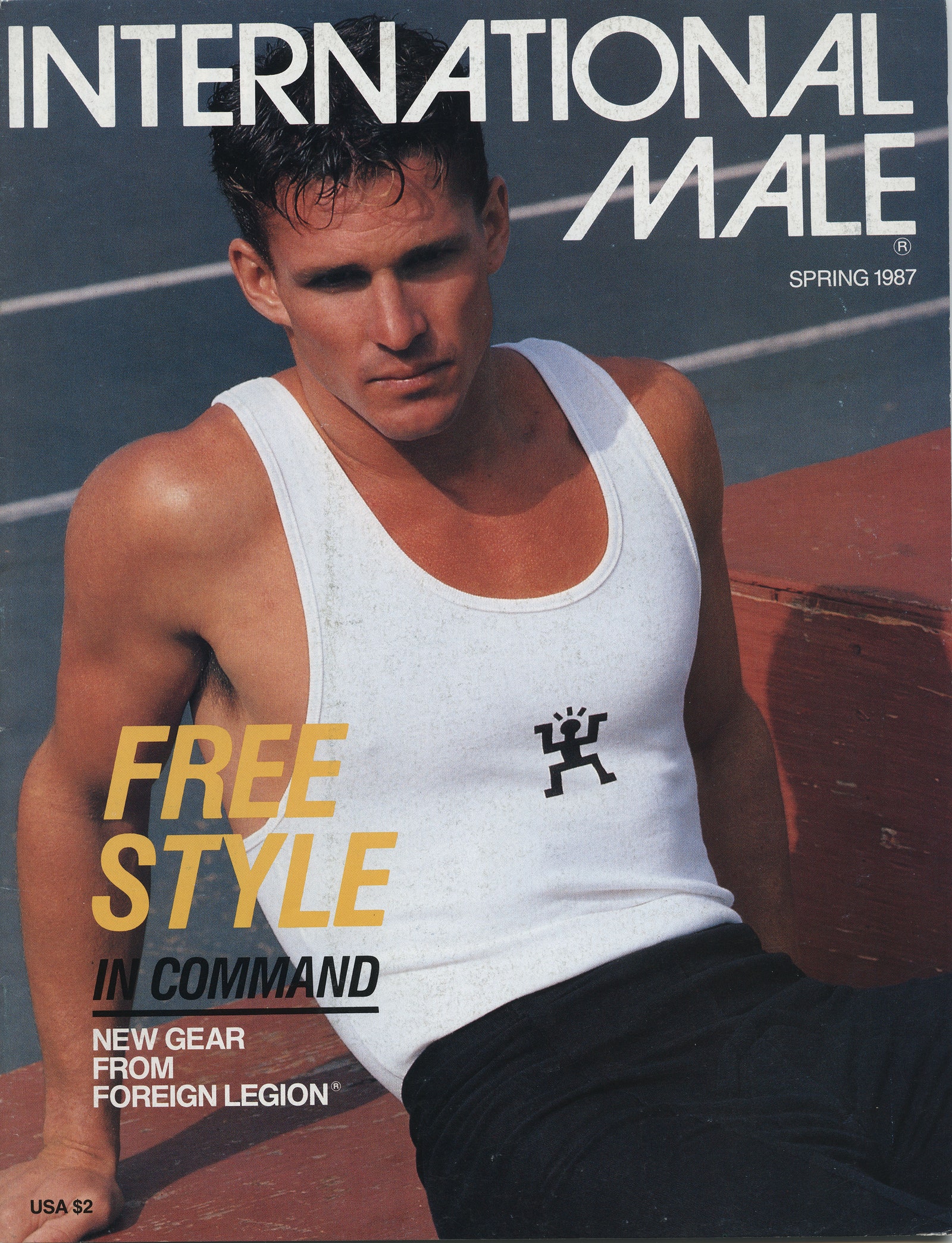“They never thought, like, are we doing something that’s great for gay rights or to help our brothers and sisters out?” Darling says of the staff. “It really was a reflection
of their desires. The things that they liked. The way that they thought a sexy man would look. They’re putting all of that in there and that’s being disseminated. And eventually when 3 million boys and men are taking this stuff in—and women—it starts to change perceptions.”
The spring 1987 catalog.
Courtesy of © Brawn, LLC / ALL MAN: The International Male StoryMaureen Dalton Wolfe worked at International Male from about 1985 to 1990, first designing window displays at the San Diego retail store and then working as an art director for shoots. “I was home,” she says. “Like, I met my people, and I was adopted by all those boys. They just took me in.” The gay guys around her didn’t have to hide in the closet at work, gossiping about their weekends and hitting up clubs and the clothing-optional Black’s Beach in La Jolla together. During the 80s and early 90s heyday of male modeling, they’d hire models fresh off Versace runways and cologne ads. (Though some models wouldn’t work with International Male since it was looked at as a “gay” brand.)
“We’d do a casting and five hundred guys or more would show up. Guys would walk in and just take their pants off immediately,” Dalton Wolfe adds with a laugh. “I mean, they were like ‘is this what you want to see?’ And I was like, ‘yeah in a minute, just wait. Put ‘em back on.’”
At the time, though—and even more so when Buckard and others left after catalog giant Hanover Direct purchased International Male in 1988 and tried to make it mainstream in the 90s—there was a tightrope walk around not “appearing” gay. Staff would get calls from people wanting off this “gay porn” list. Maybe one photo spread featured models who happened to be wearing wedding rings, and the phone lines would light up because how dare they suggest that two men could marry each other?
Serious workout wear.
Courtesy of © Brawn, LLC / ALL MAN: The International Male Story“There was a constant battle, back and forth, of what we were projecting,” Dalton Wolfe says. “But at the same time, how do you have three guys in their underwear or two guys, like, wrestling and not look a little gay?”
Now, Dalton Wolfe can clock International Male’s influence in the neon clothes she sees at Urban Outfitters and ASOS when she shops for her son. “The boys have no problem with pink or purple, or wearing nail polish, or being feminine. And I feel like International Male was at the beginning of all of that,” she says. All Man producer and co-director Jesse Reed sees the impact online, too, citing male users on TikTok—regardless of their sexuality—wearing expressive clothing that may have gotten their asses kicked at school twenty years ago.
“Say what you will about social media, it has democratized and given agency to a variety of quote-unquote minority voices, who can now broadcast themselves and open our world up,” he says. “And that’s what connects back for me to International Male and what Gene was doing.”
As Gene Buckard put it himself in his intro to the fall/winter 1978-79 catalog, that was always International Male’s goal: “If it’s true that fashion reflects how we perceive ourselves, then we think you will see yourself mirrored in these pages.”

